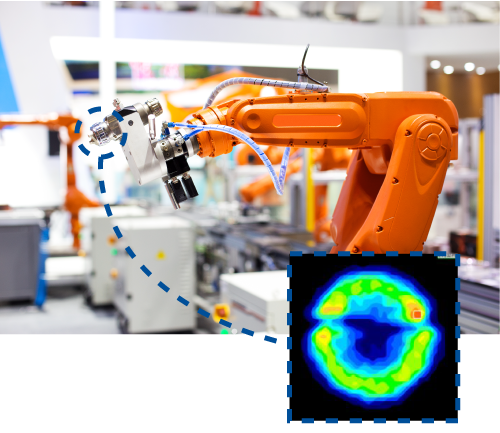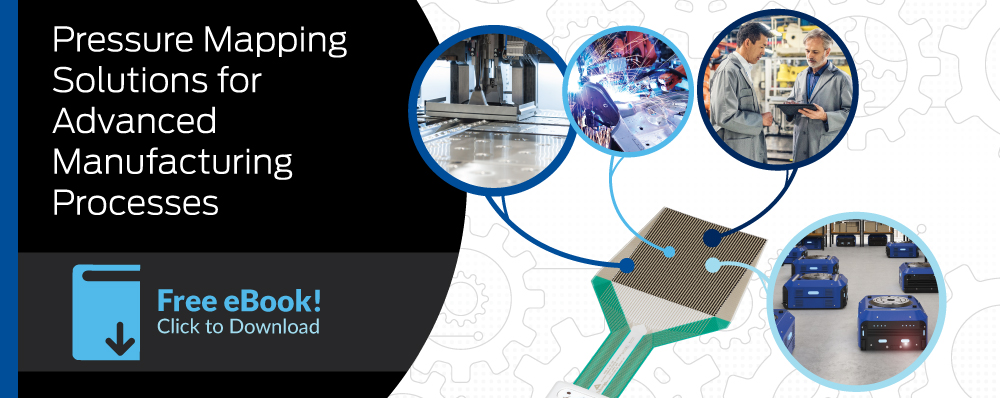Qualifying the Safety of Collaborative Robots with the Help of Pressure Mapping Technology
 There are always risks involved whenever humans and machines work alongside one another in a manufacturing environment. From a machine design perspective, employing methods to test the calculated movements that automated machines make can go a long way in improving the safety of these systems.
There are always risks involved whenever humans and machines work alongside one another in a manufacturing environment. From a machine design perspective, employing methods to test the calculated movements that automated machines make can go a long way in improving the safety of these systems.
Collaborative robots (also known as Cobots) get their name because they are programmed to perform their functions while, in some fashion, collaborating directly with humans. These robotic systems are designed for applications ranging from pick & place, package assembly, welding, and beyond. In many cases, Cobots are designed into a production line without any safety caging.
Having a reliable method to test and characterize the output force of cobots is a difficult challenge that design engineers of these systems face. However, as one cobot system manufacturer found out, pressure mapping technology can be an effective tool to determine if a robot is working safely by their own metrics.
Recently, a robotic system manufacturer used an I-Scan™ pressure mapping system to gauge the amount of force applied by a Cobot arm across its different movements. As part of their machine set-up process, I-Scan sensors were placed on a flat contact surface to capture the amount of force applied by the arm, the overall pressure distribution of the contact area, and also determine if the force application would get stronger or lighter over a certain period of time.
With this information, the operator can gauge that the Cobot is functioning within its ideal baseline metrics, or make adjustments to the system to ensure safety for all.
Whether in research & development, or as a spot-checking tool, pressure mapping technology offers several ways to make a safer, more efficient manufacturing process. For more innovative applications, download this free eBook.

